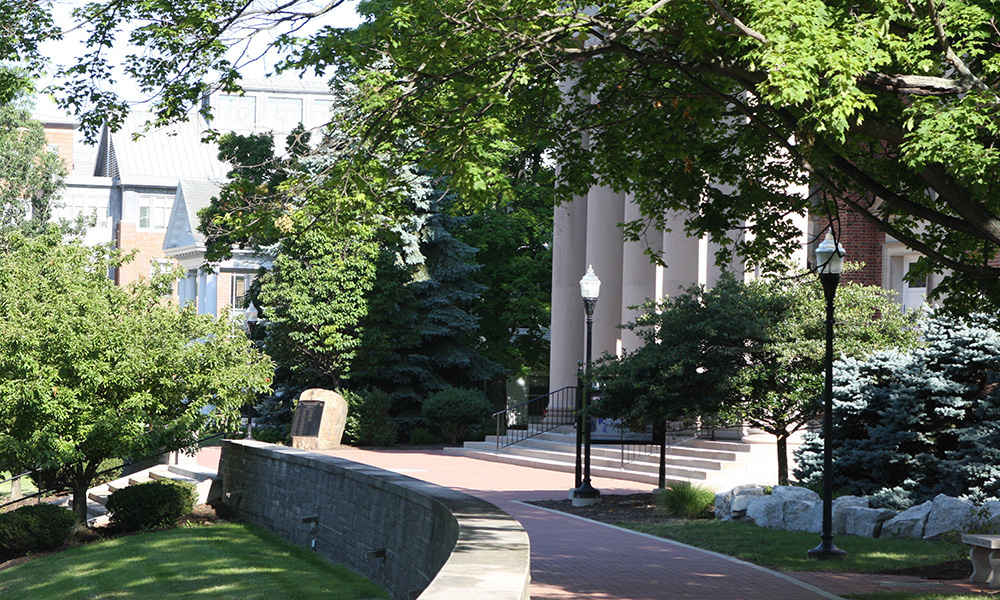The National Science Foundation recently announced a $386,277 grant awarded to Denison University physics professors Wes Walter and Dan Gibson. The three-year NSF grant will fund a corresponding three-year project to study two promising candidates for laser cooling: the negative ions of lanthanum and thorium.
Walter and Gibson will collaborate with Denison students to study the interactions of photons with negative ions in two series of experiments. In the first, they will measure the structure of the thorium negative ion and isotope shifts in the electron affinities of lead and thallium. For this work, they will employ a kilovolt ion beam/tunable laser system at the college.
The second series of experiments will take place at Stockholm University in Sweden using the state-of-the-art electrostatic ion storage ring DESIREE and its existing laser and detection systems. Walter, Gibson, and their students will travel to the facility during summers to conduct experiments on excited-state lifetimes and photodetachment processes on lanthanum and thorium negative ions.
“Ultimately, the precise measurements of isotope shifts in electron affinities will provide benchmark information for the physical chemistry database and give insight into effects that connect atomic physics to nuclear physics,” Walter says. “We are adding significant knowledge to our field.”
“We recently demonstrated that La– (scientific notation for the negative lanthanum ion) has the richest spectrum of bound-bound transitions ever observed for any atomic negative ion,” Gibson says. “And we continue to investigate its properties in experiments in Stockholm at DESIREE, measuring lifetimes for radiative decay of La– excited states. This work helps evaluate losses that occur during laser cooling processes.”
“These are terrific opportunities for our students, who get to conduct research both at our facilities here and at a premier international scientific research facility,” Walter says. “For example, at Denison we can precisely measure electronic transitions between bound states of Th– with resonant two-photon laser spectroscopy.”
Denison researchers also use photodetachment threshold spectroscopy to measure the isotope shifts in the negative ions of lead and thallium, which are sensitive to interactions of electrons both with each other and with the nucleus.
The National Science Foundation is the only federal agency whose mission includes support for all fields of fundamental science and engineering, except for medical sciences. The NSF is tasked with keeping the United States at the leading edge of discovery in areas from astronomy to geology to zoology. In addition to funding research in the traditional academic areas, the agency also supports “high-risk, high pay-off” ideas, novel collaborations, and numerous projects that may seem like science fiction today, but which the public will take for granted tomorrow.
